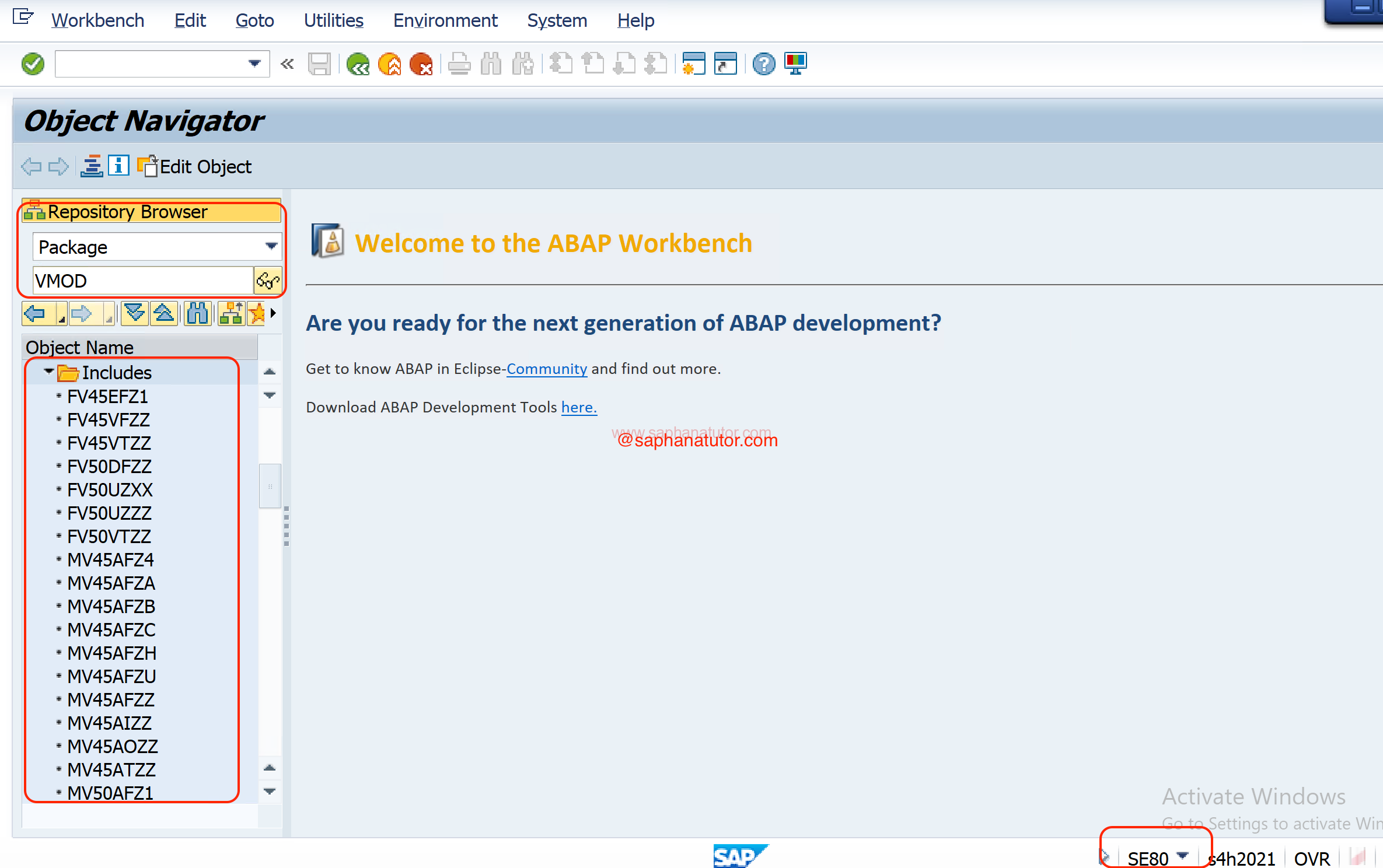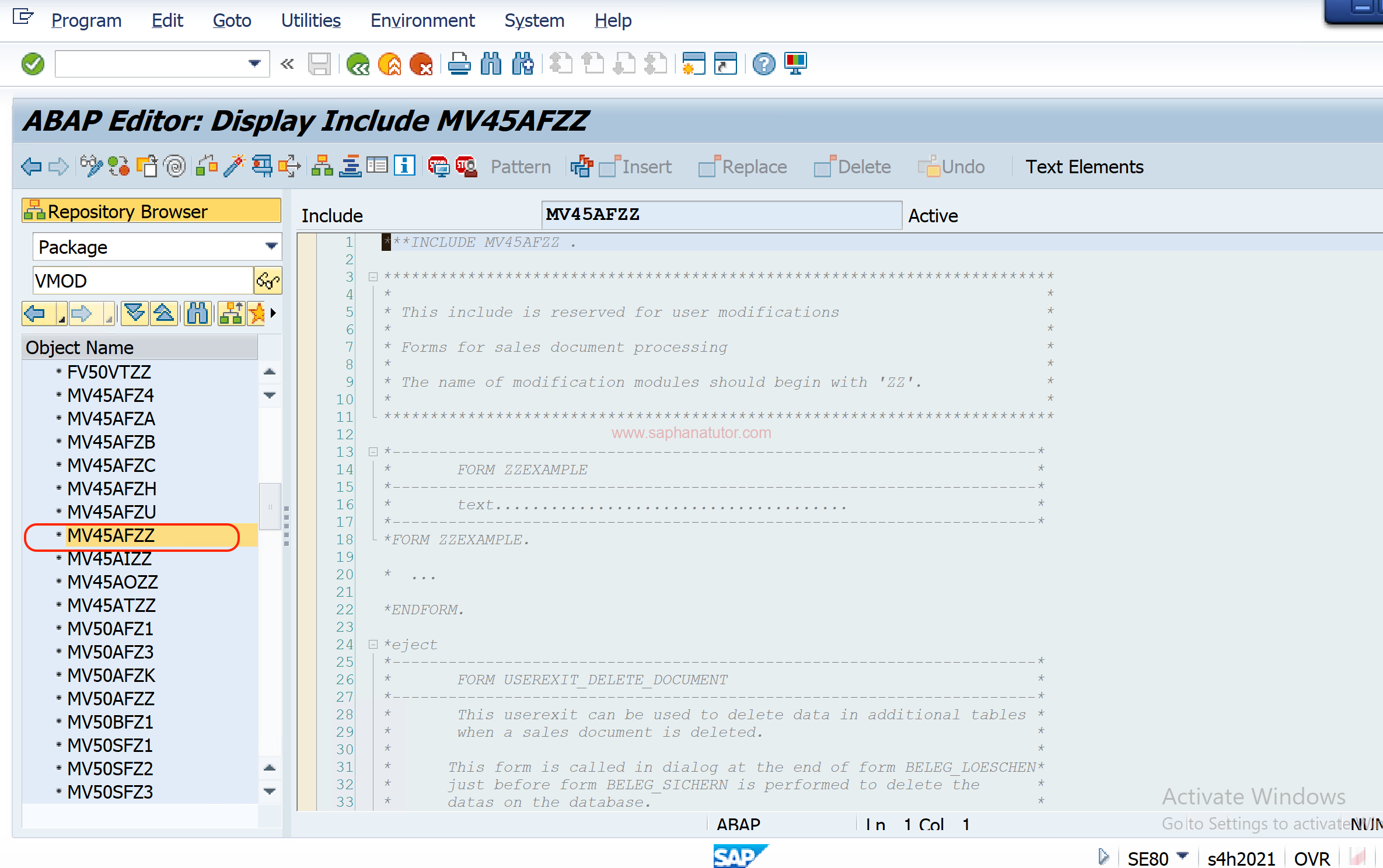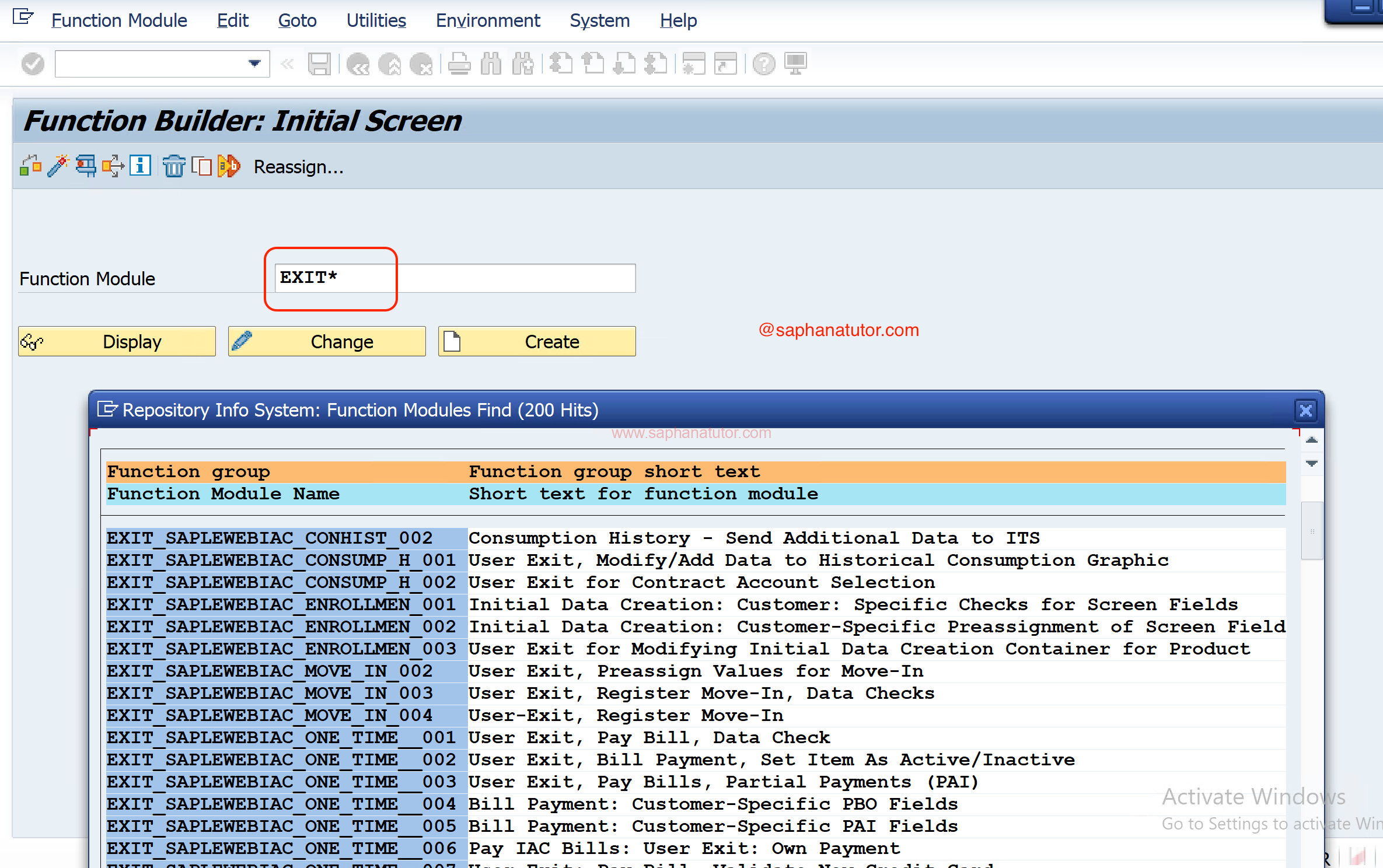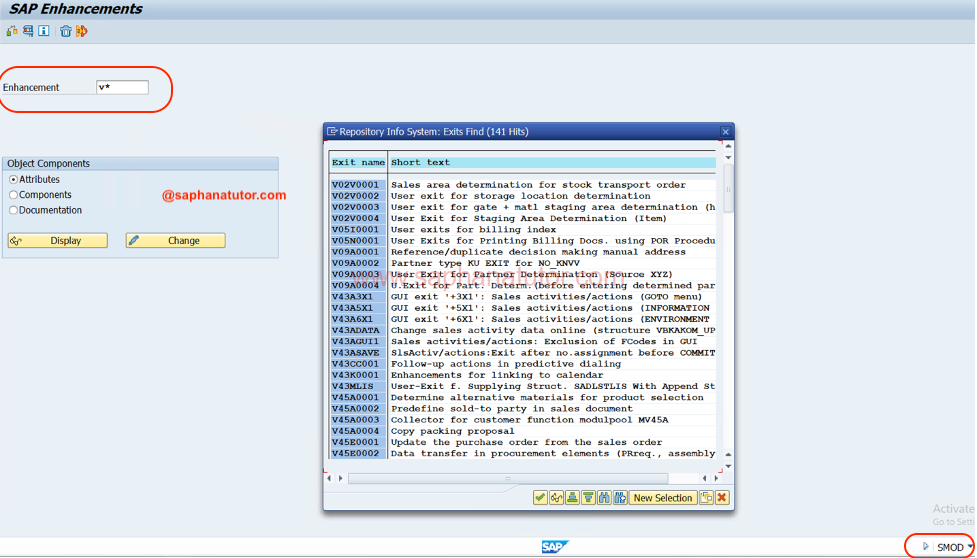Introduction to SAP SD
User exits in SAP SD (Sales and Distribution) are pivotal for businesses seeking to customize their SAP systems. These exits are strategically placed within the software, allowing for bespoke enhancements without altering the core SAP code, thus maintaining system integrity and facilitating seamless upgrades.
| Program | User Exit | Description |
|---|---|---|
| MV45AFZZ | USEREXIT_DELETE_DOCUMENT | Triggered during sales document deletion to perform additional custom tasks. |
| USEREXIT_FIELD_MODIFICATION | Allows modification of screen fields during sales document processing. | |
| USEREXIT_MOVE_FIELD_TO_VBAK | Moves custom fields to the sales document header (VBAK). | |
| MV45AFZA | USEREXIT_MOVE_FIELD_TO_KOMKD | Moves custom fields to communication structure KOMKD. |
| MV45AFZB | USEREXIT_CHECK_XVBAP_FOR_DELET | Checks before deleting line items in sales document. |
| MV45AFZD | USEREXIT_CONFIG_DATE_EXPLOSION | Used for configuration date control in sales documents. |
| FV45EFZ1 | USEREXIT_CHANGE_SALES_ORDER | Allows custom code to run when a sales order is changed. |
| RV60AFZZ | USEREXIT_NUMBER_RANGE | Used for custom number range functionality in billing documents. |
| RV60AFZD | USEREXIT_RELI_XVBPAK_AVBPAK | Relevant for partner determination during billing. |
| MV45AFZH | AUTHORIZATION_VALUE_SPLIT | Used for splitting authorization values for payment cards. |
MV45AFZZ User Exit
- USEREXIT_DELETE_DOCUMENT: Invoked to clean up or validate data before a sales document is permanently deleted.
- USEREXIT_FIELD_MODIFICATION: Allows dynamic field adjustments based on specific business logic during order processing.
- USEREXIT_MOVE_FIELD_TO_VBAK: Facilitates the transfer of additional data to the sales document header, enhancing data capture.
Program-Specific User Exits
- Program MV45AFZA: Hosts exits like
USEREXIT_MOVE_FIELD_TO_KOMKD, crucial for transferring data to KOMKD during document processing. - Program MV45AFZB: Contains
USEREXIT_CHECK_VBAK, which adds an extra layer of validation to the sales document header.
User Exits for Specialized Processes
- Product Allocation: Exits such as
USEREXIT_MOVE_FIELD_TO_COBLare vital for transferring data to COBL for accurate cost tracking. - First Data Transfer:
USEREXIT_MOVE_FIELD_TO_VBAKKOMis pivotal during the initial data transfer to ensure comprehensive data capture.
ABAP Programming and User Exits
Proficiency in ABAP programming is essential when working with user exits. Custom code is often required to tailor the standard SAP functionality to meet unique business needs. Testing and Troubleshooting User Exits Implementing user exits necessitates meticulous testing to ensure they operate as intended. This phase is critical to identify and rectify any issues before the exits are moved to a production environment. Best Practices for Implementing User Exits in SAp, Adhering to best practices, such as thorough testing, documentation, and security measures, is imperative when working with user exits to ensure system stability and data integrity.
How to find SAP SD user exits
Using Transaction SE80 (Object Navigator)
- Enter the Object Navigator:
- Launch transaction code
SE80. - Select the ‘Repository Browser’ tab.
- Launch transaction code
- Locate the Package:
-
- In the ‘Repository Browser’, choose ‘Package’ from the dropdown menu.
- Type in the package name associated with SD user exits, such as
VMOD.

- Identify Enhancements:
-
- Look for the ‘Enhancements’ directory within the package.
- Expand this section to see the available user exits.

Using Transaction SE37 (Function Builder)
- Open Function Builder:
- Enter transaction code
SE37.
- Enter transaction code
- Find User Exits:
- In the ‘Function Module’ input, type patterns like
EXIT_*orUSEREXIT_*and hit F4. - Scroll through the resulting list to find applicable user exits.
- In the ‘Function Module’ input, type patterns like

Using Transaction SMOD (SAP Enhancement Management)
- Access Enhancement Management:
- Execute transaction code
SMOD.
- Execute transaction code
- Explore Enhancement Projects:
- Click F4 on the ‘Enhancement’ input field.
- Search for projects that are typically named with ‘V’ or ‘SD’ for the SD module.
Using Transaction CMOD (Project Management of SAP Enhancements)
- Navigate to Project Management of SAP Enhancements:
- Use transaction code
CMOD.
- Use transaction code
- Search for Projects:
- Click on the ‘Enhancements’ button.
- Perform a search for relevant user exits
If we don’t find user exit in path – go to T- code SMOD => Enter V* => Present F4

SAP SD User Exits Interview Questions
1. How does USEREXIT_MOVE_FIELD_TO_VBAK enhance the sales document header?
USEREXIT_MOVE_FIELD_TO_VBAK allows us to add custom fields to the sales document header. This means we can include data specific to our business needs that SAP doesn’t provide by default, enhancing the document’s information richness.
2. What testing strategies would you employ for a user exit that modifies field behavior?
I would perform unit tests to ensure the user exit works as intended, followed by integration tests to see its effects in the overall process. Regression tests are important to ensure no existing functionalities are broken, and finally, user acceptance testing to confirm the exit meets the end-users’ needs.
3. Describe a scenario where USEREXIT_DELETE_DOCUMENT would be crucial.
USEREXIT_DELETE_DOCUMENT is critical when you need to ensure that all related custom actions, like updating related databases or systems, are completed before a sales document is deleted. For instance, if deleting a sales order must trigger a stock update or a notification to a CRM system, this exit would handle those tasks.
4. What best practices should be followed when implementing user exits in SAP SD?
The best practices include understanding the business requirement clearly, keeping the code clean and well-documented, ensuring the custom code doesn’t affect system performance or upgrade paths, and thoroughly testing the user exit before deployment.
5. How can USEREXIT_FIELD_MODIFICATION be used to improve order processing?
USEREXIT_FIELD_MODIFICATION can tailor the SAP GUI to the user’s needs by showing, hiding, or making fields mandatory based on specific conditions. This customization can speed up order entry, reduce errors, and ensure that the necessary data for each order type is collected efficiently.
